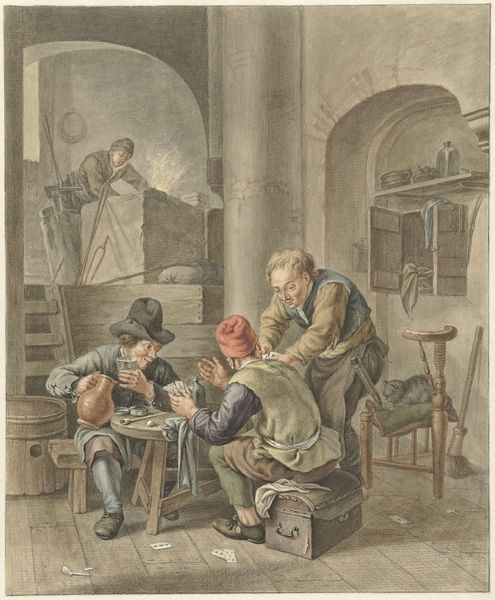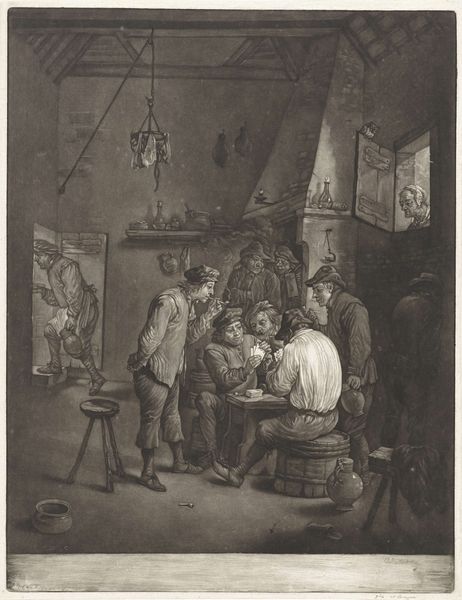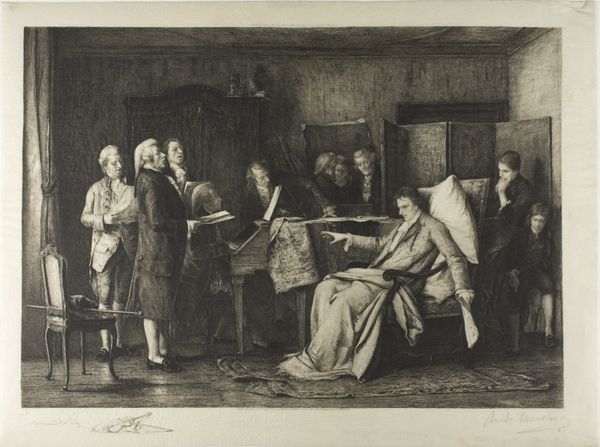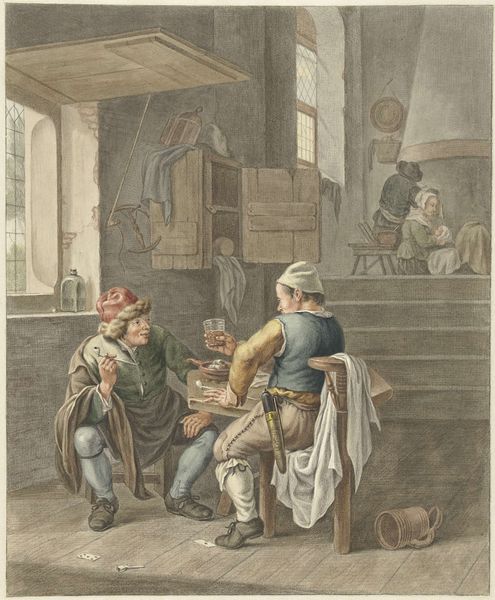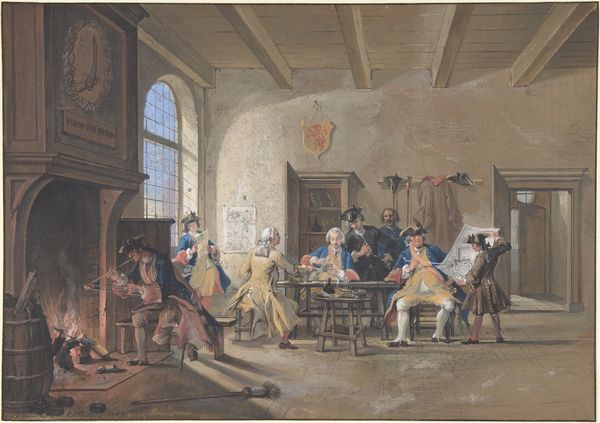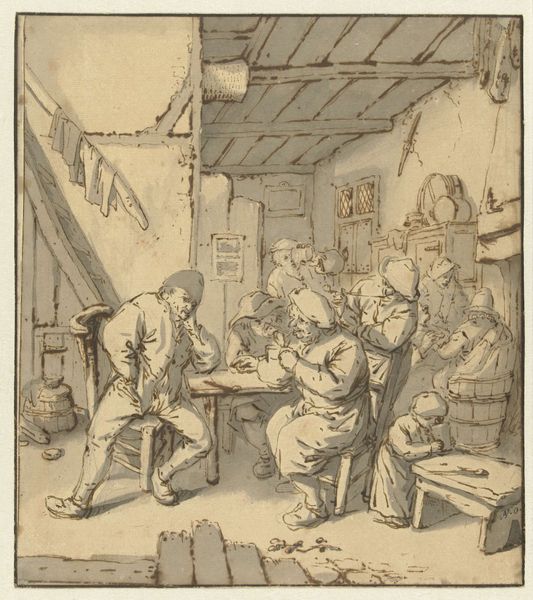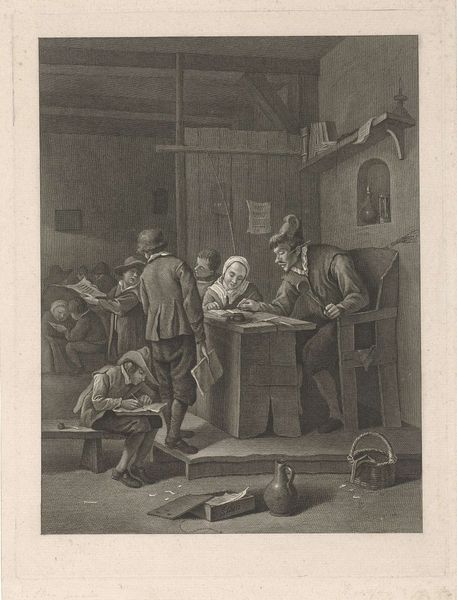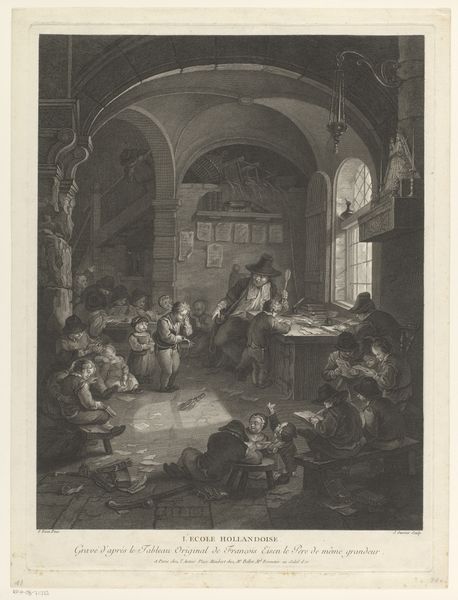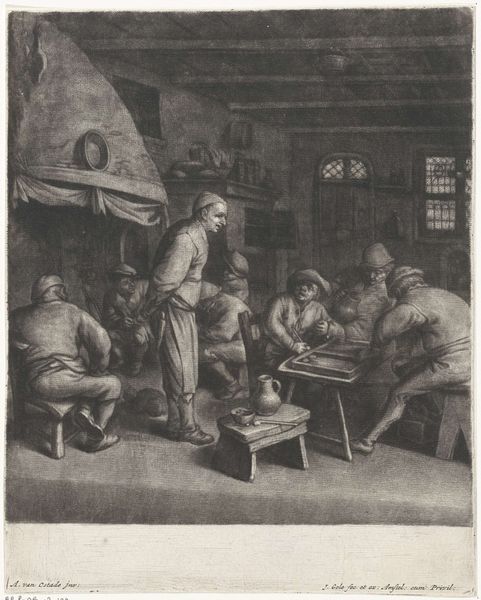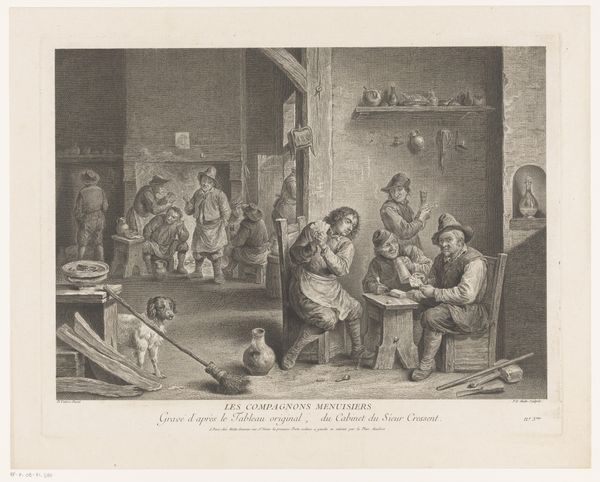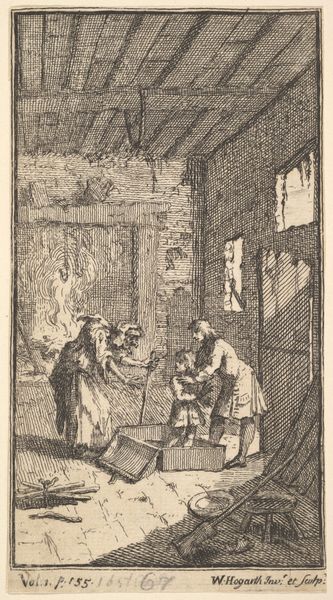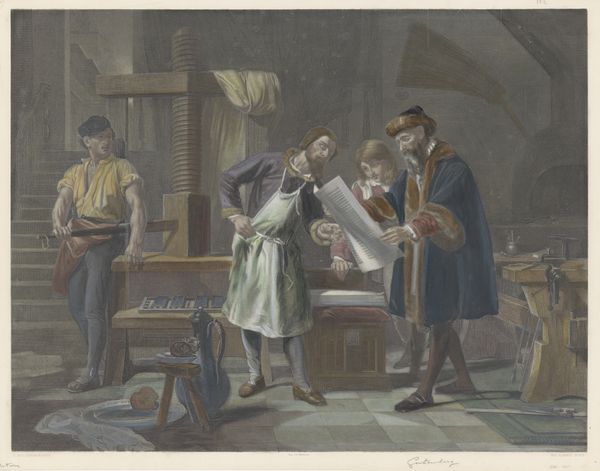
Dimensions: height 450 mm, width 405 mm
Copyright: Rijks Museum: Open Domain
Curator: Abraham Delfos created this lively scene, "De Smidse," or "The Smithy," around 1772. It's a drawing employing pen, watercolor, and colored pencil, currently residing in the Rijksmuseum. Editor: My first impression is that it's surprisingly inviting. The diffused lighting and soft colors make even the intense heat of the forge seem rather cozy. There’s almost a celebratory air despite it portraying what would’ve been a common workplace. Curator: Indeed, genre scenes like this became popular, particularly in the Rococo period. They offered a glimpse into the lives of everyday people, aligning with a growing interest in humanism and a sentimental view of common labor. It also, naturally, created a sense of national identity at a time of growing global interactions. Editor: It's interesting that you mention national identity because the blacksmith has historically symbolized strength and resilience in so many cultures. This smithy feels less about the solitary hero and more about a communal activity, reflecting perhaps the societal bonds in the Dutch Republic. Look at the way people are positioned. They all watch on one central smith. Curator: Absolutely. And consider the deliberate choice of depicting labor not just as toil, but as a gathering point, reinforcing societal values. The composition isn't merely capturing a trade but constructing a visual narrative of communal purpose, playing into the moralizing trend of the time and portraying an industrious populace in line with Dutch aspirations. Editor: I see such loaded objects and symbols here. The chains, tools, the anvil, even the open doorway leading somewhere. Are we looking at something practical or aspirational? What were we trying to represent here with this artwork for the smith and others? Curator: That's the tension, isn't it? Art like this is both a document and a piece of propaganda. Delfos is, in some ways, providing us a picture of that time, showing an honest interior and vocation in Holland. In another, this idealized scene presents an aspiration for a society unified through common purpose and labor, and industrious output. Editor: Thanks to Delfos, we’re really able to reflect on that balance in a moment in history through this one singular image. Curator: Precisely. It's the enduring dialogue between reality and idealism, isn't it?
Comments
No comments
Be the first to comment and join the conversation on the ultimate creative platform.
